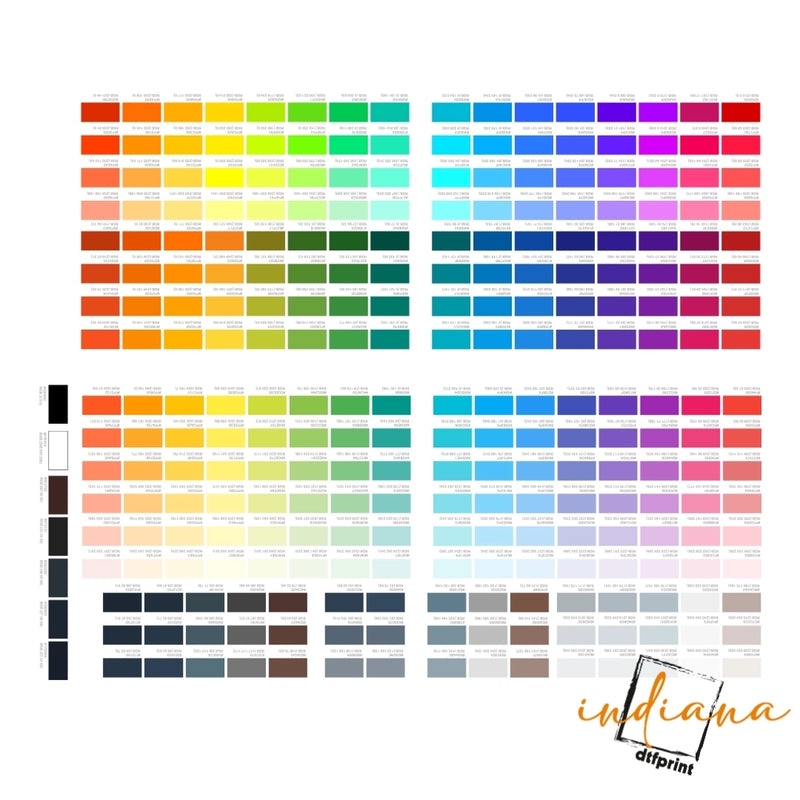Trends change quickly in the cutthroat fashion sector, therefore companies require printing techniques that can stay up to date without compromising quality. DTF printing fashion brands are generating news because of this. Designers are finding that the speed, accuracy, and versatility needed to swiftly get runway ideas onto store shelves are provided by DTF (Direct to Film) technology.
Whether they are independent labels or well-known names. Fashion brands are benefiting from DTF in terms of color quality, durability, and creative freedom. Whether it’s runway fashion DTF printing for seasonal collections or quick turn reprints for popular designs, this technology is redefining how the industry works.
Why DTF Printing Works for the Fashion Industry
For decades, many labels relied on screen printing or heat vinyl for custom pieces. While these methods have their place, DTF for fashion industry applications is proving far more adaptable.
- Print gradients, delicate lines, and complex patterns with no color restrictions.
- Versatility of Fabric: Suitable for unique materials, blends, cotton, and polyester.
- Big or Small Runs: Ideal for large purchases or limited editions.
These features make custom DTF apparel for designers a practical choice for both high end fashion houses and small boutique brands.
Innovation on the Runway
Today’s fashion world thrives on speed. Designers preview a collection during Fashion Week and want it available in stores, or online, almost immediately. Fashion printing innovation with DTF supports this demand.
By skipping lengthy setup times, runway fashion DTF printing can transfer designs to garments in hours, not days. That means a look worn by a model in Paris or New York can be reproduced and shipped quickly to buyers worldwide.
Sustainable Printing for a Conscious Industry
Consumers are increasingly looking for environmentally responsible products. This is where eco friendly DTF printing for fashion comes in. Unlike some older printing techniques, DTF reduces waste by eliminating the need for large minimum orders and excess ink usage.
Paired with sustainable garment printing techniques, DTF allows designers to produce exactly what’s needed, reducing overproduction and unused inventory, a common issue in the fashion world.
DTF vs Conventional Fashion Printing
When it comes to DTF vs conventional fashion printing, the differences are clear:
- Setup Time: DTF is faster, with no need for screens or stencils.
- Detail: Compared to many conventional techniques, high resolution DTF printing for clothing are better at capturing minute details.
- Durability: Despite multiple washings, DTF does not fade or break.
These benefits make it easier for businesses to produce prints of superior quality that appeal to today's customers.
Limited Editions and Personalization
Many brands thrive on exclusivity. Limited edition fashion prints with DTF allow for small, unique runs without high costs. This is perfect for capsule collections or artist collaborations.
Another growing trend is apparel personalization with DTF. Customers can choose their color schemes, names, or graphics, turning standard pieces into one of a kind garments. This approach keeps fans engaged and loyal.
From Runway to Retail: Faster Than Ever
Efficient runway to retail printing workflows is critical in today’s fast moving market. DTF helps designers stay ahead of trends and rivals by facilitating the rapid creation of prototypes, approval, and production.
The capacity of DTF printing fashion brands to simultaneously deliver in-store inventory and online orders is demonstrating that quality and speed can coexist.
Conclusion
The shift toward DTF technology isn’t just a passing trend; it’s a major change in how fashion is produced and sold. From fashion brands switching to DTF for faster launches to using eco friendly DTF printing for fashion to meet sustainability goals, the benefits are clear.
Whether it’s high-resolution DTF prints for garments, limited edition fashion prints with DTF, or customized apparel for a personal touch, this technology delivers results that work for both runway and retail.
To explore professional DTF for fashion industry services tailored to designers, visit Indiana DTF Print and bring your creative visions to life.
FAQs
1. Why are fashion brands switching to DTF printing?
They’re switching for speed, high quality prints, and flexibility. DTF handles intricate designs, supports various fabrics, and allows small runs, ideal for modern fashion production demands.
2. How does DTF printing help the fashion industry?
DTF printing offers faster production, vibrant colors, and fabric versatility. It’s great for runway to retail timelines, limited editions, and sustainable garment printing techniques with minimal waste.
3. Is DTF printing eco friendly for fashion?
Yes. Eco-friendly DTF printing for fashion reduces overproduction, waste, and ink use. This makes it a strong option for brands aiming to meet sustainability goals without losing quality.
4. Can DTF printing handle limited edition fashion pieces?
Absolutely. DTF allows for the production of limited edition fashion prints in small quantities. Which makes it affordable for bespoke clothing designs, artist collaborations, and exclusive collections.
5. How fast is DTF compared to conventional fashion printing?
DTF is much faster, often completing designs within hours. This speed supports efficient runway to retail printing workflows, helping brands launch products quickly while maintaining quality standards.











